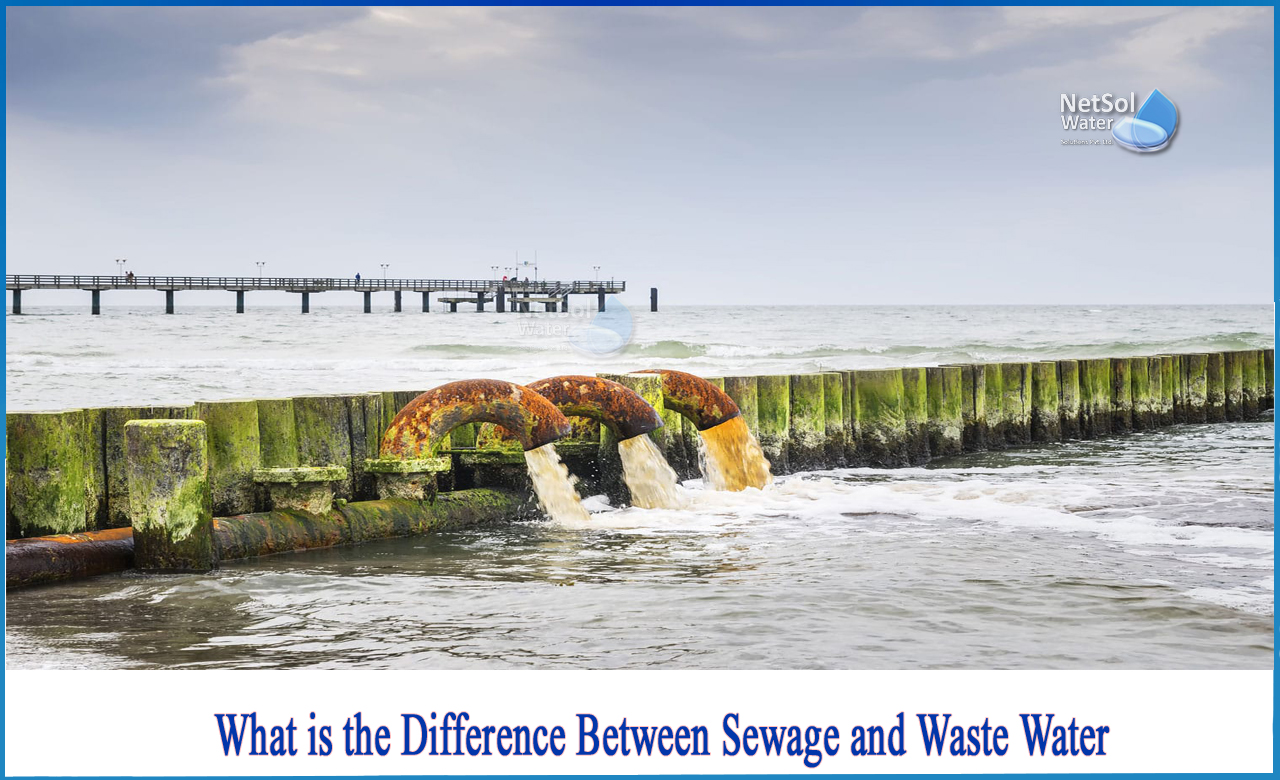What is the difference between sewage and waste water?
The terms 'wastewater' and 'sewage' are frequently used interchangeably, but there are distinctions between the two. In fact, the term 'sewage' is considered a subset of the term "wastewater."
Although the term "sewage" conjures up images of toilets, it is used to describe all types of wastewaters generated by domestic dwellings. Sewage is classified into two types: blackwater (wastewater from toilets) and greywater (wastewater from all domestic sources except toilets). Although blackwater and greywater have distinct characteristics, both contain pollutants and disease-causing agents that must be treated.
Non-residential wastewater generally necessitates more treatment steps than sewage wastewater. Stormwater, for example, should be collected separately to prevent flooding of treatment plants during bad weather. Screens are frequently used to remove trash and other large solids from storm sewers. Furthermore, many industries generate wastewater that is high in chemical and biological pollutants, which can clog treatment systems. Dairy plants and breweries are prime examples. To address any issues, these types of wastewater sources typically provide their own treatment or preliminary treatment in order to protect the main wastewater treatment system.
What is the composition of wastewater?

By weight, wastewater is mostly water. Other materials constitute a minor portion of wastewater but can be present in sufficient quantities to endanger public health and the environment. Because almost anything that can be flushed down a toilet, drain, or sewer can be found in wastewater, even domestic sewage contains a high concentration of potential pollutants. The wastewater components that should most concern homeowners and communities are those that have the potential to cause disease or have a negative impact on the environment.
>Organisms
Many different types of organisms live in wastewater, and some of them are critical to treatment. By consuming organic pollutants in wastewater, a variety of bacteria work to break them down. Organisms use this process to convert waste into carbon dioxide and water.Bacteria and other microorganisms are abundant in wastewater and perform much of the treatment. Most wastewater treatment systems are built to rely heavily on biological processes.
>Pathogens
Many pathogenic viruses, parasites, and bacteria can also be found in wastewater and can enter from almost any source. Hospitals, schools, farms, and food processing plants are all possible sources. Some illnesses caused by wastewater are relatively common. A variety of pathogens in wastewater can cause gastroenteritis, and Cryptosporidium-related illnesses can also occur.
Other serious diseases caused by wastewater include hepatitis A, typhoid, polio, cholera, and dysentery. These diseases can spread as a result of drinking water from polluted wells, eating contaminated fish, or engaging in recreational activities in polluted waters.
>Organic Matter
Because organisms use dissolved oxygen in the water to break down wastes, large amounts of biodegradable materials are hazardous to receiving waters such as lakes, streams, and oceans. This can reduce or deplete the supply of oxygen in the water required by aquatic life, resulting in fish kills, odors, and overall water quality degradation. The amount of oxygen organisms required to break down wastes in wastewater is known as the biochemical oxygen demand (BOD), and it is one of the measurements used to determine overall wastewater strength.
Some organic compounds are more stable than others and cannot be broken down quickly by organisms, posing an additional treatment challenge. Many synthetic organic compounds developed for agriculture and industry fall into this category.
>Inorganics
Inorganic minerals, metals, and compounds like sodium, potassium, calcium, magnesium, copper, lead, nickel, and zinc are common in sewage and wastewater. They can come from a variety of sources, such as industrial and commercial waste, stormwater, and inflow and infiltration from cracked pipes. The majority of inorganic substances are relatively stable and cannot be easily broken down by organisms in wastewater.
Many inorganic substances can contaminate soil and water in large quantities. Some are toxic to both animals and humans and can build up in the environment. As a result, additional treatment steps are frequently required to remove inorganic materials from industrial wastewater sources. Heavy metals, for example, which are discharged with many types of industrial wastewaters, are difficult to remove using traditional treatment methods.
For more information of STP’s or ETP’s or WWTP’s, consult the best engineers from Netsol Water.




